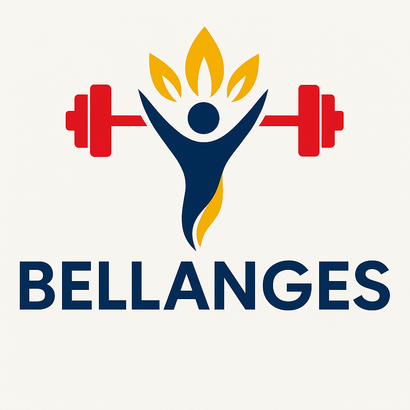Your Cart is Empty
Creating an automated AI-based business that generates $1 million a month requires a
24 Jan, 2025 7

Creating an automated AI-based business that generates $1 million a month requires a blend of advanced technology, scalable systems, and a highly lucrative niche. Here’s a step-by-step breakdown of how such a business can be structured, starting from the goal and working backward:
Revenue Goal: $1 Million/Month
- Revenue Breakdown:
- $1M/month = ~$33,333/day.
- If the average customer pays $100/month, you need 10,000 active paying customers.
- Alternatively, a higher-tier pricing model (e.g., $500/month) reduces the customer base to 2,000 active customers.
Monetization Model
- Recurring Revenue (SaaS Model): Subscription-based pricing for consistent income.
- High-Profit Margins: Low operating costs due to automation and minimal human intervention.
- Upsells/Add-ons: Offer premium services (e.g., custom AI models or priority support) to boost revenue.
Core Business Idea
AI Content Automation Platform for Businesses
A SaaS platform offering fully automated AI-driven content creation, personalization, and distribution to help businesses scale their marketing efforts without manual intervention.
Key Features of the Platform
-
AI Content Creation:
- Generates blog posts, product descriptions, ad copy, email campaigns, and social media posts.
- Leverages cutting-edge AI models for human-like creativity (e.g., GPT-like and diffusion-based transformers).
-
Voice Cloning & TTS:
- Hyper-personalized AI-generated videos or podcasts with voice cloning for brands, influencers, and individuals.
- Text-to-Speech (TTS) with emotional resonance for customer service or storytelling.
-
Marketing Automation:
- AI-powered ad campaigns: Suggest and launch Facebook/Google ads with optimized content.
- A/B testing with AI recommendations.
-
Data Analytics:
- Real-time performance tracking of content and campaigns.
- AI-powered insights to improve ROI.
-
Integrations:
- Seamless integration with platforms like Shopify, WordPress, HubSpot, and Salesforce.
Automation Backbone
-
AI Models:
- Use open-source models like GPT for text and custom fine-tuned voice diffusion models for TTS.
- Train models on specific industries for better accuracy (e.g., e-commerce, SaaS, real estate).
-
Workflow Automation:
- Automate client onboarding, content delivery, payment processing, and customer support via tools like Zapier, Stripe, and AI-powered chatbots.
-
Scalability:
- Cloud-based infrastructure with auto-scaling (e.g., AWS, Azure, or Google Cloud).
- Use APIs to integrate features and reduce development overhead.
Marketing Strategy
-
Target Audience:
- Small-to-medium businesses (SMBs) that need marketing support but lack in-house resources.
- Digital marketers, content creators, and agencies seeking productivity tools.
-
Acquisition Channels:
- Freemium Model: Offer a free tier to attract users; upsell advanced features.
- Content Marketing: Create educational resources (e.g., blogs, tutorials, webinars) showcasing AI's potential.
- Affiliate/Referral Program: Reward existing customers or influencers for bringing in new clients.
-
Retention:
- Regular feature updates based on user feedback.
- Exceptional customer support (mostly AI-driven with human backup).
-
Scaling Growth:
- Expand into multilingual support to attract global clients.
- Strategic partnerships with agencies or platforms (e.g., co-marketing with Shopify).
Operational Cost
- Development: Build the platform using AI engineers and developers (initial costs are high, but ongoing maintenance is lower).
- Cloud Infrastructure: $10K–$50K/month depending on user base size.
- Marketing & Sales: ~$100K/month for ad spend, partnerships, and outreach.
- Support: Use AI chatbots for scalability; minimal human intervention required.
- Total monthly operational cost: ~$200K (leaving ~$800K as profit).
Launch Plan
-
MVP Launch:
- Offer a core set of features to test the market and gather feedback.
- Target an underserved niche (e.g., AI-generated voiceovers for e-commerce).
-
Early Adopters:
- Offer discounts or lifetime memberships to the first 1,000 users.
-
Scale-Up:
- Reinforce backend systems to handle large-scale demand.
- Focus on customer success stories to build trust and credibility.
-
Global Expansion:
- Localize the platform into multiple languages.
- Offer country-specific marketing templates and voice options.
By combining scalable AI technologies with a robust marketing strategy, this business can generate sustainable revenue while requiring minimal manual intervention. The key is to solve a critical business need and continuously improve the platform based on user feedback and technological advancements.

Share on Facebook

Share on X

Share on Pinterest
Latest From Internet Marketing
- How I Cloned a $19,000/Month Website Using AI in 24 Hours
- PROPAGANDA Edward Bernays AUDIOBOOK
- This AI Makes 8K Videos from ONE Prompt – You Won’t Believe the Results
- To elevate the Stoicism Mind University YouTube channel to over 1 million monthly visitors
- How I Transformed My Life and Built My Dream Reality
- Insanely Easy Micro Habits & Systems That Will Change Your Life
- You can change your whole life in 6 months—if you take back your 5 to 9
- Top Ai Agents in 2025
- From $0 to $1,000,000 in Just 3 Years | The Ultimate Wealth-Building Strategy
- From $0 to $1,000,000 in Just 3 Years | The Ultimate Wealth-Building Strategy
You submitted your comment for moderation.
Please enter a valid email address (Ex: johndoe@domain.com).
This is a required field.
This is a required field.
0 Comment(s)

